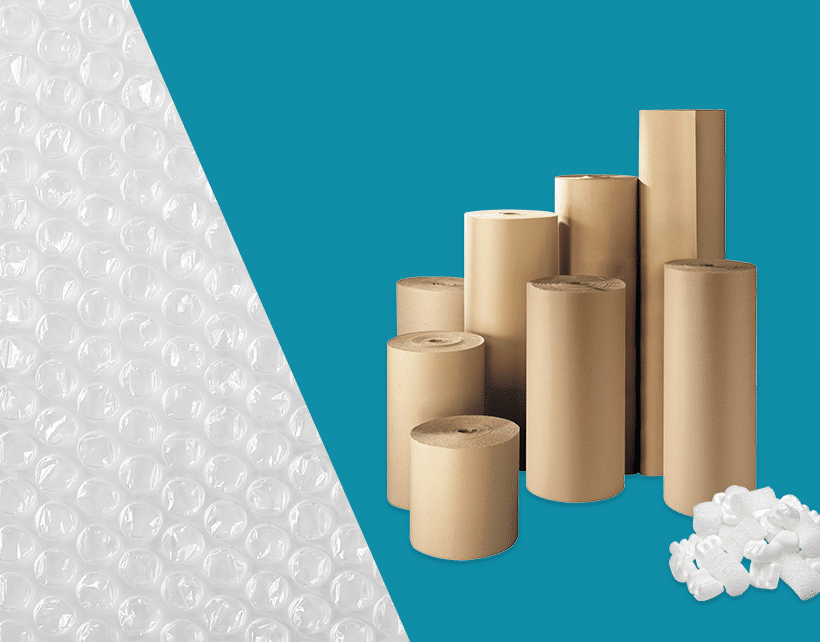
What can I use instead of bubble wrap?
Last Updated on 06/10/2025
Did you know that while bubble wrap is recyclable, it is not biodegradable? It cannot be placed for curb-side pickup or dropped off in regular recycling centres. Most recycling machines are built for harder plastics, whereas bubble wrap is made of a low-density polyethylene. This is largely due to the fact that these materials often end up clogging the machine, which makes repair and maintenance harder and time-consuming. Plastic films, like shrink wrap or plastic bags are made of the same material, and account for almost 46% of the nearly 14 million metric tons of plastic waste that end up in oceans every year.
With the ease of e-commerce steadily taking over, people are using more packaging solutions to keep up with growing online orders. It is of course possible to reuse bubble wrap or even take the effort to research a proper recycling centre to dispose of it. However, bubble wrap is not the only option out there. We have compiled a list of eco-friendly alternatives to bubble wrap for you to be more sustainable!
Kraft paper
Kraft paper is usually made of recycled paper and is one of the cheapest and simplest packaging solutions. This eco-friendly option is extremely versatile, as companies can also add their branding or customised messages to the paper and use it for packaging their products.
An innovative variation of this is the honeycomb kraft paper. You can think of it as corrugated bubble wrap, as it functions exactly like bubble wrap, with one difference: it is 100% recyclable! Imitating a honeycomb shape, this paper stretches and curves around fragile products like glass or porcelain to provide ultimate protection. It is lightweight but due to its interlocking shape, this packaging provides cushion and absorbs shock, allowing for a secure transit of products.
Thanks to its compact design, it takes up a lot less storage space compared to bubble wrap. This in turn decreases the carbon footprint needed for transport. There is also a reduction in shipping and handling fees thanks to this inventive solution.
Biodegradable packing peanuts
Highly popular with small businesses, these biodegradable packing peanuts are easy to use and even more fun to dispose of! These can be used to fill in empty spaces in your packaging, and thereby secure your fragile items.
Unlike other biodegradable packaging, you can ensure that these actually break down after use. Once used, these packing peanuts can be easily recycled. These can just be run under water, and they dissolve right into it. Their practical recycling method makes packing peanuts a great sustainable option for many brands.
Paper air cushions
Sustainability is essential for businesses, and that is why it is imperative to have innovations in protective packaging. These bubble wrap substitutes are like little pillows made of kraft paper. An eco-friendly alternative to plastic air cushions, most of these are made from recycled paper and can be disposed of in recycling centres. The interior of the bag is made of thin plastic film, but as it is made from biodegradable starch, it dissolves in paper pulp processing plants. This ensures that there is no negative impact on recyclability.
These air cushions protect your delicate products and ensure they reach the destination safely. They are ideal for packaging lightweight goods. These have all the benefits of bubble wrap without disrupting the recycling process.
There are many other bubble wrap alternatives available. Fill paper is a great way to fill up the empty spaces in packaging, and thereby secure your products from being jostled. In case you are looking for something more aesthetic, shredded paper may also be used to beautify your packaging! Available in a variety of colours, these are the perfect option in case you want your packaging to reflect your brand colours and style.
It is possible that it may take up to 1,000 years for bubble wrap to fully decompose in a landfill! And that is in the event that it actually makes it to a landfill, and not clog up oceans or become food for an unwitting animal. These are just some alternatives for bubble wrap you can use in your packaging. We hope that this inspires you to explore your options and make informed decisions. We urge you to reflect on these alternatives and do what you can as an individual and a business to be more sustainable!









